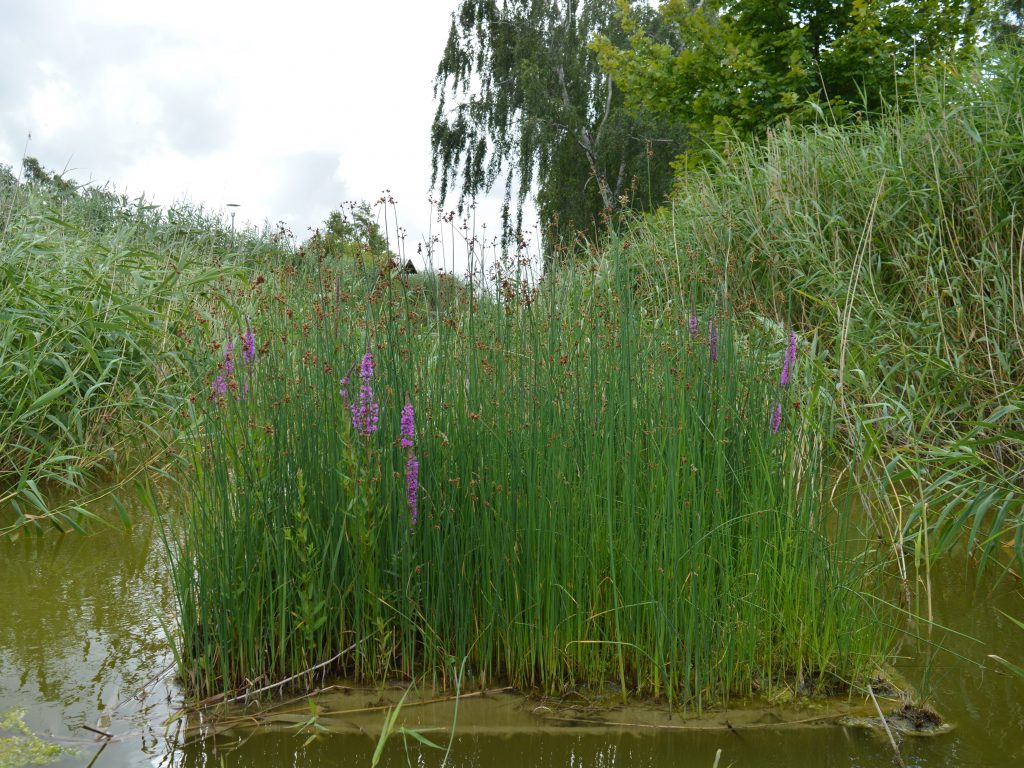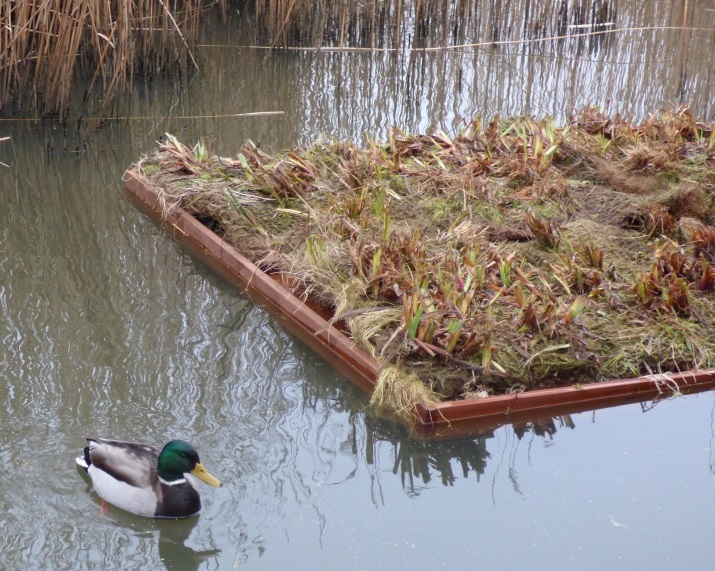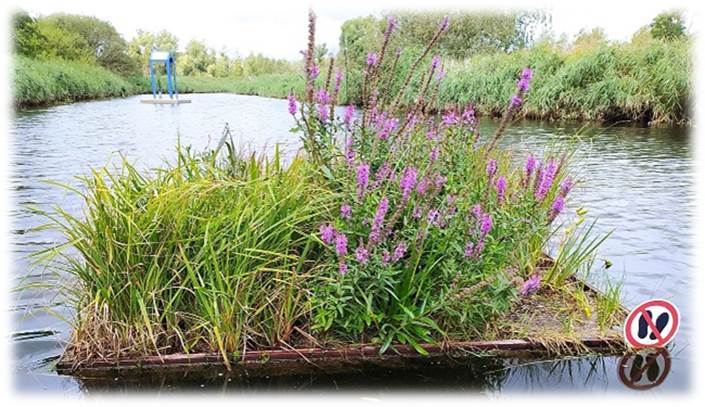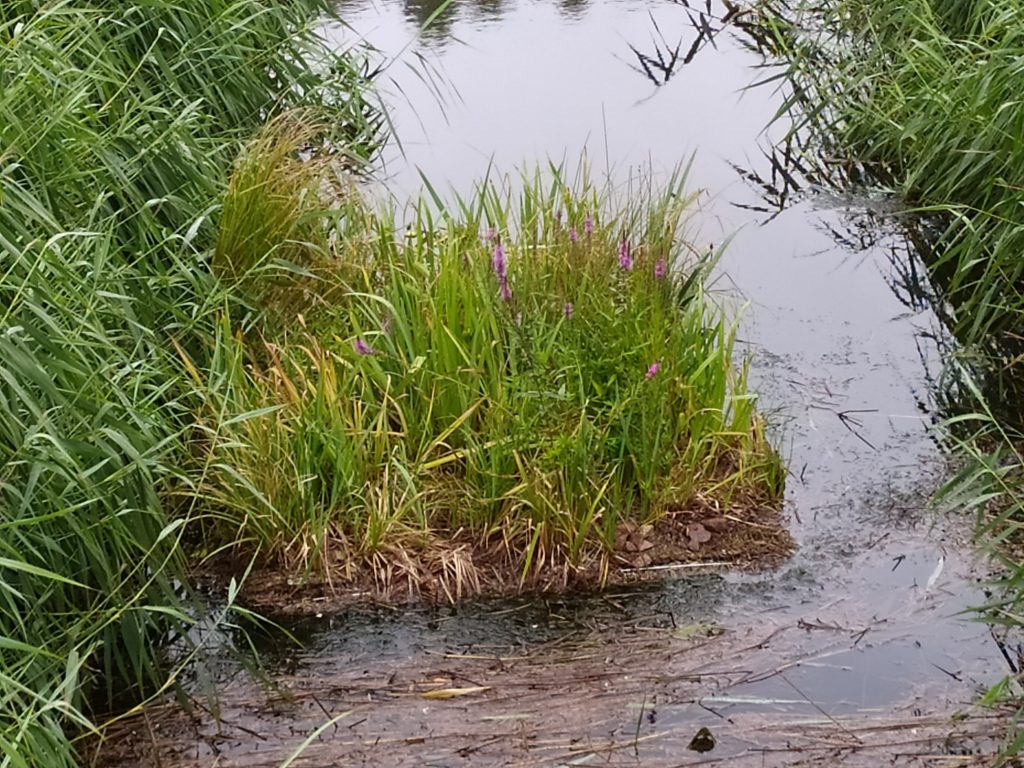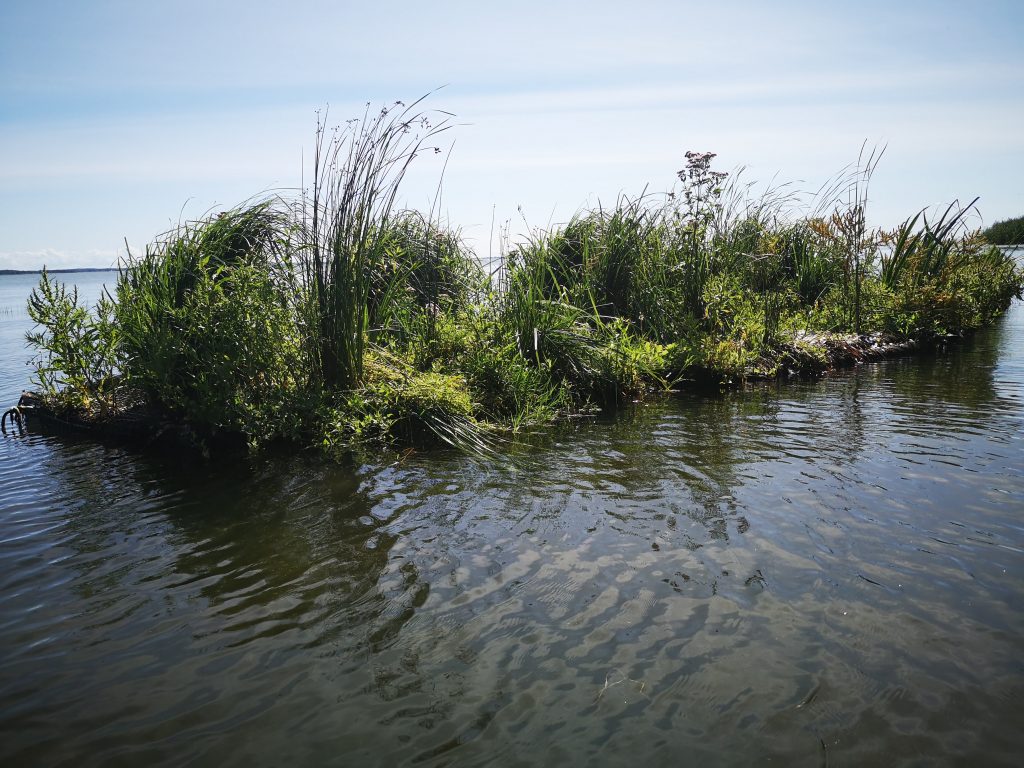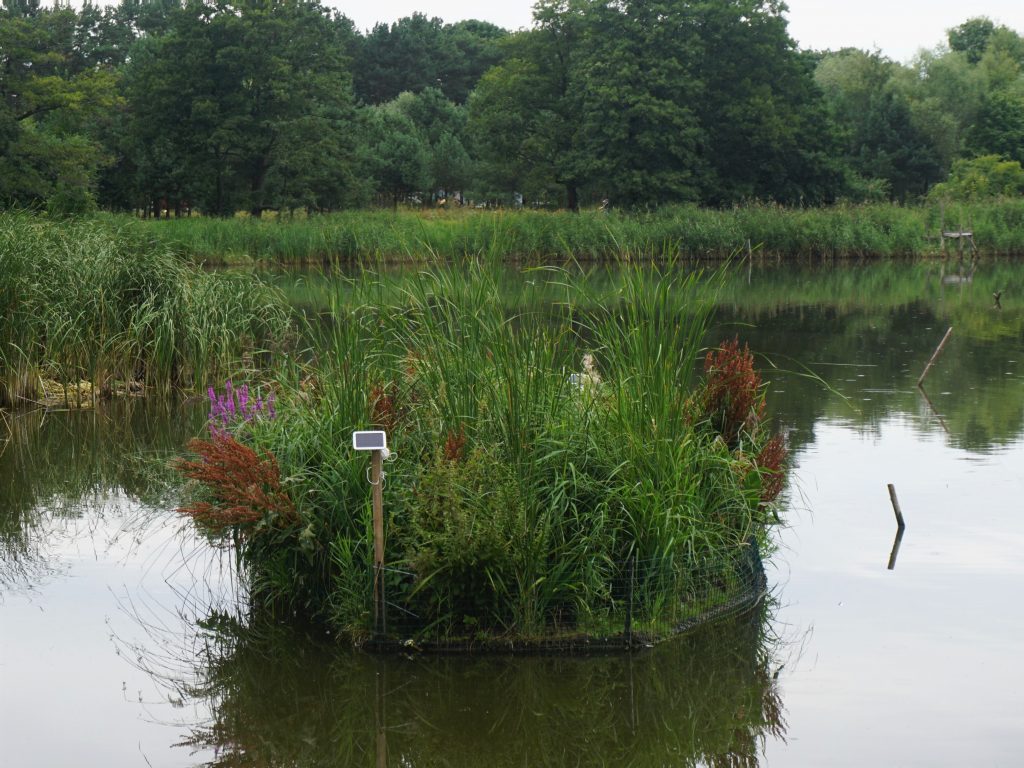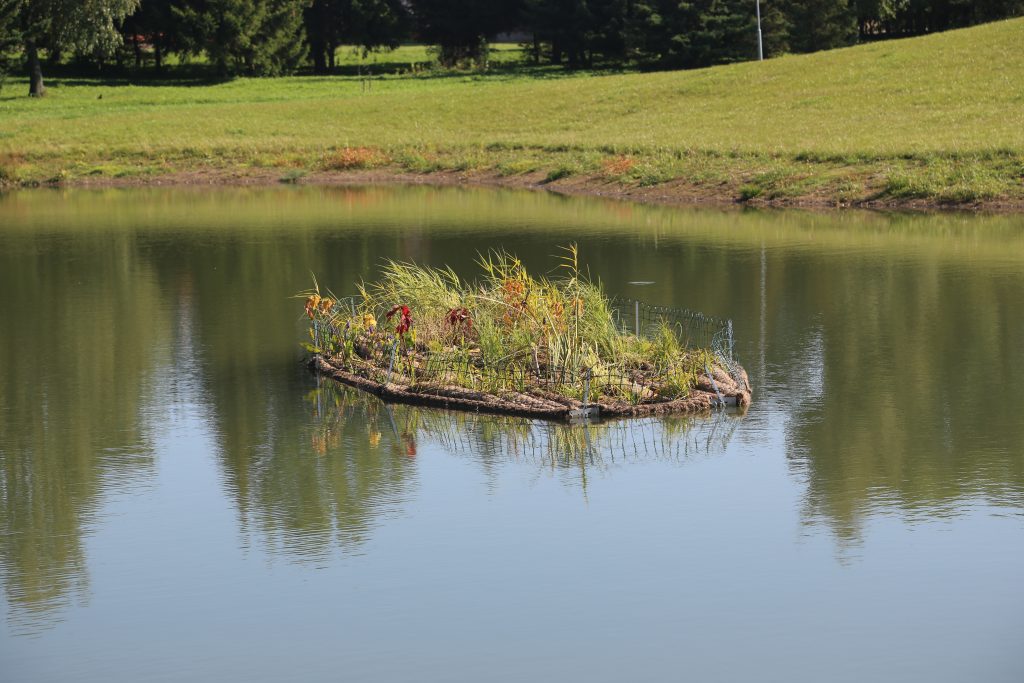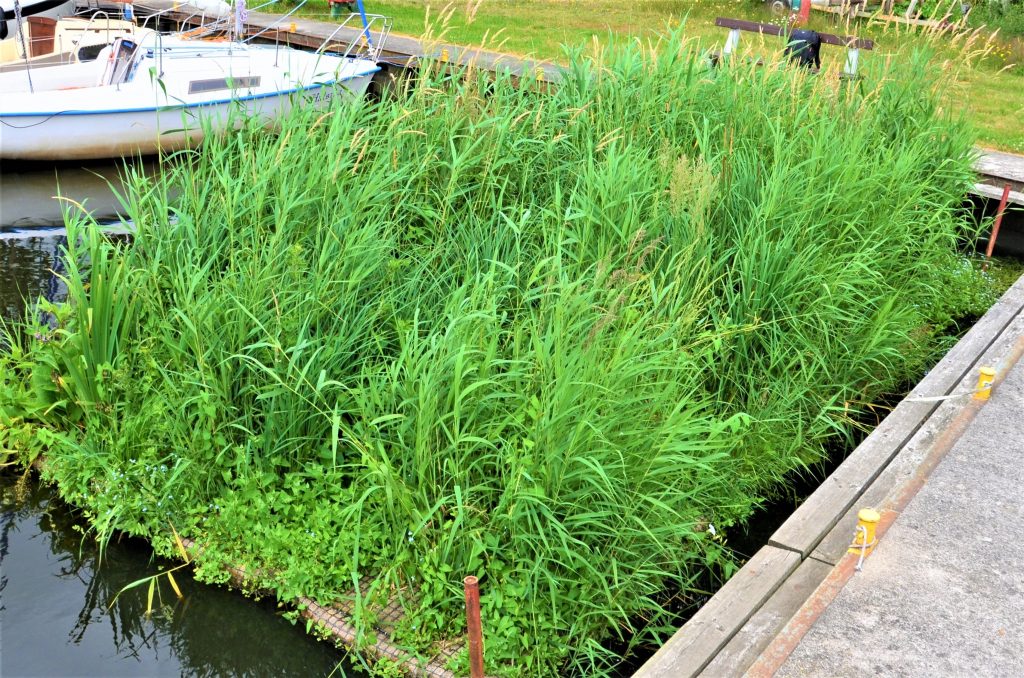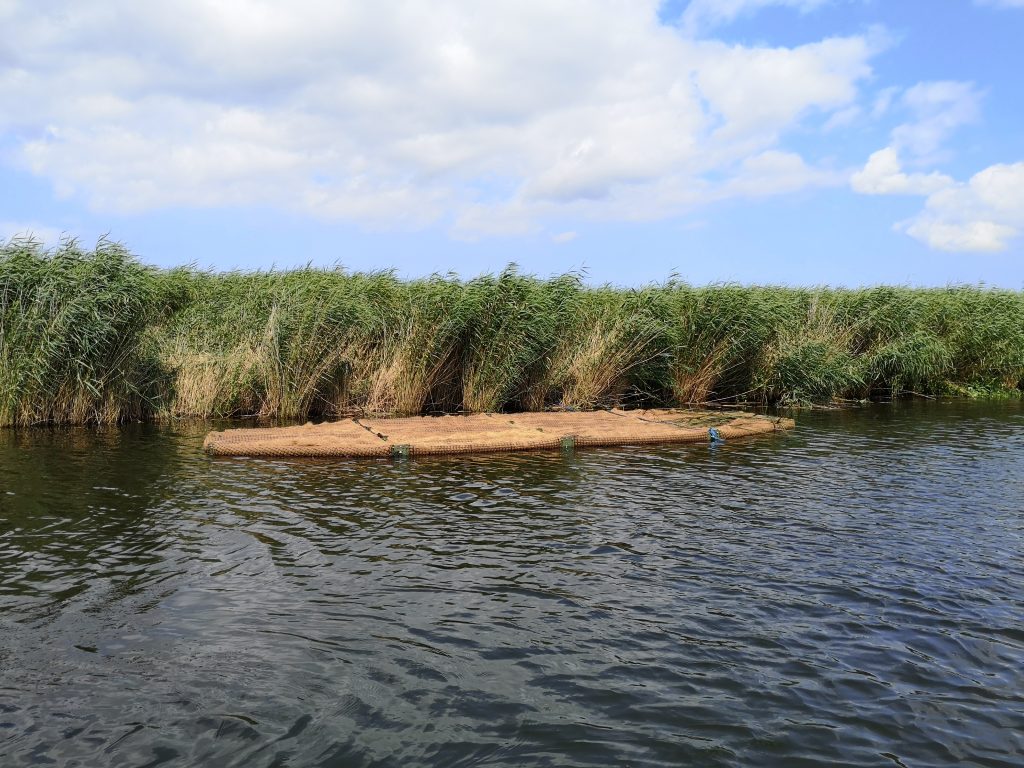Until May 2020 we implemented crowed funding campaign on the Nutribute platform. This voluntary financing scheme supported floating island installation in Klaipėda, Lithuania. Click here for more information.
Coastal municipalities in Lithuania, Poland and Germany are supported by our project experts to find the best installation sites for floating wetlands in order to maximize nutrient removal, gain additional aesthetics benefits to boost tourism and to prevent spatial conflicts of use. Cross-border co-operation along the South Baltic Coast will allow us to test both technological and socio-economical methodologies in different environments.
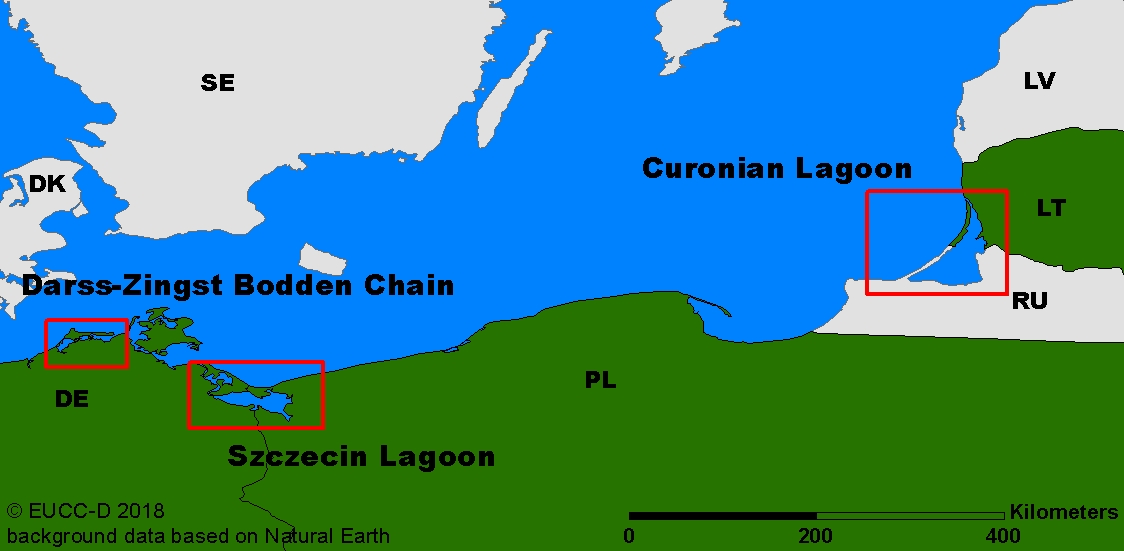
First floating island were installed in the Curonian lagoon, Darss-Zingst and Szczecin lagoon in 2018 and 2019.
Germany
Together with our cooperation partner – the Federal State Institute of Agriculture and Fishery MV – we installed the first two small floating islands in the aquaculture research station in Born at the Darss-Zingst Bodden Chain in 2018. The two floating wetlands, made out of stainless steel mesh filled with reed stems, were planted with a variety of native emergent macrophytes. In the first year we wanted to find out which plants can adapt best to the special site conditions, grow well and remove most efficiently phosphorus and nitrogen from the eutrophicated waters. The islands are installed at the outlet of the aquaculture pond (sturgeon cultivation) and we monitored the water quality as well as nutrient removal in the plant biomass.
Due to the decreasing buoyancy of the islands from 2018 we installed a modified island in 2019. At this modified island, the floating matrix was made out of thermowood. We planted macrophytes like purple loosestrife and yellow flag, but also sedges (Carex acutiformis) and rushes (Schoenoplectus lacustris).This island type helps us to avoid plastic utilization. We will continue the water monitoring and the determination of nutrients in plant biomass.
Another installation of a floating wetland was done in December 2020 at the Szczecin lagoon. The municpality Vogelsang-Warsin is fighting with nutrient pollution and E.coli bacteria. Like at the other site in Born, this island type also consists of thermowood.This floating wetland is located directly behind a pumping station.
In Summer 2021, two further floating wetlands were installed in the IGA Park in Rostock. As at the other sites, one floating wetland is made of thermowood. For the second island, a completely new island design is being tested, in which glass gravel is inserted inside the island for buoyancy. This island type would provide the opportunity for plant roots to develop not only along the gaps in the wood, but also to grow everywhere along the grass gravel. The primary objective of both islands is to increase landscape attractiveness as the IGA Park is often visited by tourists. Furthermore, they represent an element for environmental education. As a special feature, this site was further chosen for testing different halophytes such as the sea aster under higher salinity conditions, as the salinity there can reach up to 20 PSU.
Lithuania
Curonian spit national park installed the first active barrier in the Curonian lagoon in 2018. It is a net installation located at Nida in a small bay between two piers. The net, a custom-made floating rig with mesh size > 11 cm, 200 m length and 1 m height, placed at 1 m depth has its structure disposed at whole cross-section of the water column. The buoys as well as anchoring system were made especially for the project purposes. Indigenous plants, such as Common reed (in flower ponds) and willow, were fixed to the net at a minimum spacing of 0.5 m. Local plants were chosen because they might have a highest chance to adapt to the particular environmental conditions of the Curonian lagoon. The growth as well as nutrient accumulation is monitored by students and researchers from Klaipėda University.
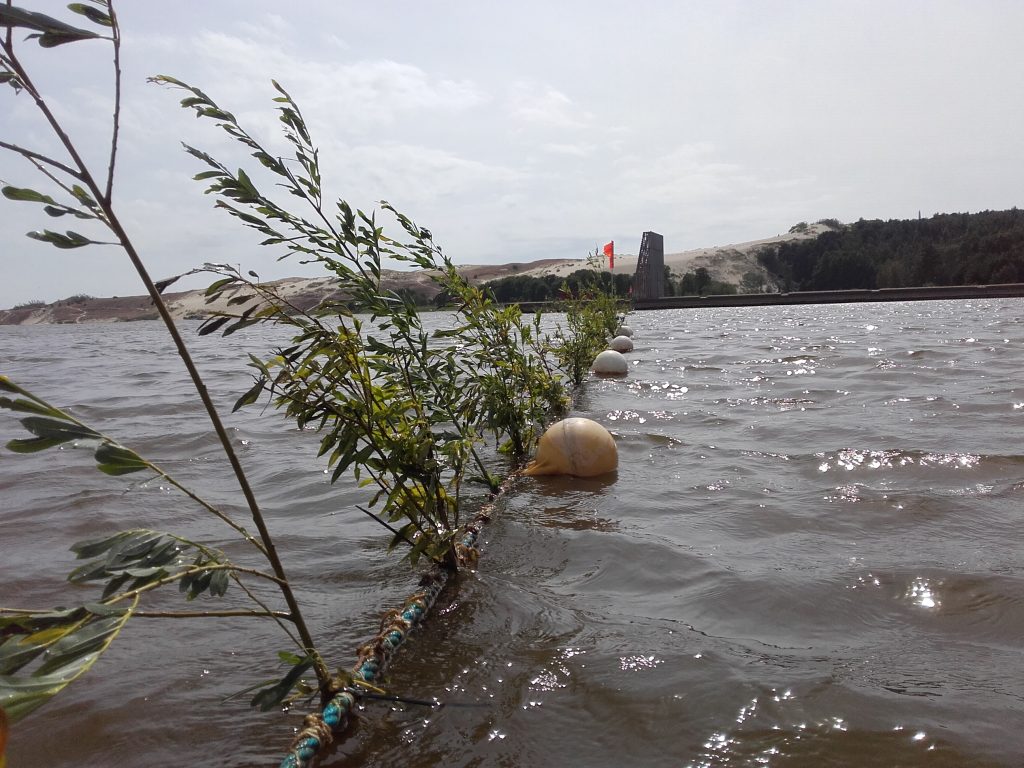
In 2019 in the Curonian lagoon close to Juodkrante, two islands each of approximately 32 m² were installed. Both islands’ floating matrixes are made of recycled and UV-resistant hollow plastic (HDPE) pipes, which are covered with coconut coir fiber and fastened using a plastic (PP) mesh. Macrophytes like Common rush, Narrowleaf cattail, Flowering rush or Great manna grass were planted individually between extra hollow pipe spaces.
In July 2021, a new floating wetland was established in Klaipeda. This floating wetland is similar to the other island designs and filled with reed and a stainless steel coating. Furthermore, the bottom was also strengthened with a stainless steel net. The island was fenced with a green garden fence to protect it from urban bird grazing. For the plant selection, reed grass and flowering blossoms like iris, pickleweed and hibiscus were chosen as well as some local plants like bulrush and sedges. This floating wetland is mainly used as an attractive landscape element.
Poland
The floating island in Poland is located in a marina on Wicko Lake, in Wolin National Park in the Szczecin lagoon. This floating, 24 m² matrix is of a similar construction to the island in Lithuania: Hollow HDPE pipes are covered with coconut coir fibres and a mesh of PP holds everything together. Emergent macrophytes like Lakeshore bulrush, Carex riparia, Broadleaf cattail and Iris pseudacorus were planted in the determined hollow spaces.
At the end of July 2021, another floating wetland with a size of 27 m² was established in Wolin National Park. This floating wetland was barely planted to allow self-seeding. Only some lakeshore bulrush was cultivated in an restricted area for biomass comparison. Already two months after installation, colonization with plants, mainly grass, started. Furthermore, this floating wetland already presents a habitat for ducks.


